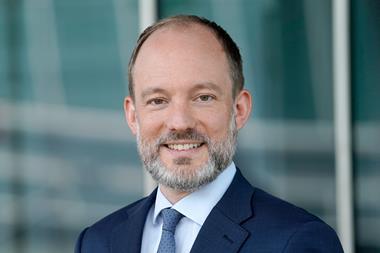The aggressive strategy adopted by speicalist pension manager, Pension Corporation, to gain control of pension funds, has attracted plaudits and criticism as David White reports
In a famous television commercial of yesteryear, Victor Kayam said he liked his Remington electric shaver so much he bought the company. Today, Pension Corporation, a specialist pensions management group formed to buy out pensions schemes unwanted by employers, is taking the same approach to UK companies and their pension schemes.
The business model of Pension Corporation, a UK holding company for Pension Insurance Corporation, Pension Corporation Investments and other subsidiaries, is to buy a company to gain control of its pension scheme. It then hives off or sells the company and continues to manage the pension scheme for the profit of its investors and, it claims, the benefit of the pension fund members.
In June 2007, Pension Corporation bought Threshers, a UK chain of wine merchants. Within weeks it sold on the company, but retained the Threshers pension fund, known as First Quench pension scheme, which had assets of £85m (€119m).
Since then, Pension Corporation has transformed the company’s pension fund deficit of £24m into a £10m surplus.
It achieved this in a number of ways. It moved £32m of cash out of the Thresher balance sheet into an escrow account underpinning the First Quench pension liabilities. It sold off the fund’s entire equities holding, representing 60% of the portfolio, and put 80% of the portfolio into money market instruments and 20% into absolute return products. It also used long-dated swaps to hedge against interest rate and inflation risks.
The aim now is to invest in absolute return-seeking assets including hedge funds, funds of hedge funds, private equity and insurance-linked securities in order to construct a portfolio that does not depend on market direction for investment return.
Pension Corporation claims that if it had not intervened in this way, the investment strategy that was being used prior to acquisition would have lost money.
However, Pension Corporation’s business model ran into trouble recently when it acquired Telent, a UK telecoms equipment maker. This included GEC Marconi’s legacy £3bn pension fund, one of the largest in the UK.
The attraction of the pension fund was a £500m surplus, which the company had set aside in an escrow account. This was the icing on the cake of the pension fund assets, which were broadly in line with the liabilities.
The escrow account was set up when the bulk of the former Marconi business was sold in 2006. It was agreed that the money could be drawn on by the pension trustees if the scheme fell into deficit. Crucially, the account could also be returned to the employer if the scheme was more than 105% in surplus.
The acquisition set alarm bells ringing. In October, the trustees of the Telent pension scheme, worried about conflicts of interest, asked the Pensions Regulator (TPR), the regulator of work-based pensions in the UK, to use its powers to appoint an independent trustee for the scheme.
Following a hearing of the Determinations Panel, the TPR’s decision-making body, the regulator appointed three independent trustees to the Telent pension scheme under a special provision of the Pensions Act 2004. This allows the TPR to appoint independent trustees to a scheme without warning.
The panel suggested that there were three situations in which conflicts of interest might arise. The first was the use by Telent, if it was controlled by Pension Corporation, of the power to appoint its directors to the board of the trustee where there was a risk that those appointees would wish to implement the Pensions Corporation’s investment strategy.
The second was where the new trustees, if they were appointed by Pension Corporation, would have a conflict of interest deciding whether to exercise their powers of investment and deciding on whether to appoint Pension Corporation as the Telent pension scheme’s investment manager.
The third was a situation where Pension Corporation were appointed as the pension scheme’s investment manager, or where its employees were involved in decisions on investment policy or its application. In that case, the panel said, a conflict of interest could arise on every occasion that Pension Corporation or its employees provided investment advice to the pension scheme.
The panel concluded that there was a realistic prospect that these situations might occur. It pointed out that Pension Corporation had put no arrangements in place for managing such conflicts of interest and concluded that the TPR’s appointment of independent trustees was necessary.
Pension Corporation’s business model and investment strategy lay at the heart of the panel’s objections. The panel said that it was clear that Pension Corporation “was not interested in the commercial activities of the employer nor in the employers that it had acquired in the past”. Pension Corporation’s business is the management of pension schemes, and it was implicit that the takeover offer was made “with a view to profit for its investors some of whom were to be appointed to the trustee board”.
The panel suggested that the language that Pension Corporation used to describe its business was indicative of the approach it would take if the acquisition went ahead. “Pension Corporation’s intentions, which it never denied, were to manage the assets of the scheme in a way that would generate a return for its investors”.
The panel considered that the relationship between Telent and Pension Corporation would be “fundamentally different” from a typical employer/scheme relationship. This was because of Pension Corporation’s business model, the escrow and its terms, and because of the unusual ratio between active and deferred members.
Sir Mark Weinberg, chairman of Pension Insurance Corporation Holdings and the co-founder of Allied Dunbar, made it plain that Pension Corporation’s intention was to manage the assets of the scheme so that the conditions of the escrow agreement would be satisfied in Pension Corporation’s favour.
He said that Pension Corporation intended to manage the Telent scheme to 105% of buyout over a five-year period - the level at which the escrow account could be returned to the employer.
The question of whether this would put the pension scheme at greater risk than before was a matter of dispute.
Pension Corporation said that managing the scheme to 10% of buyout would not mean adopting an investment strategy that would place the scheme’s assets at risk. On the contrary, they said, it could be achieved with a lower risk strategy than that the current strategy of the pension scheme.
The panel supported the view of Graham Mitchell of Watson Wyatt, the scheme’s actuary, who said that the 105% target “would require a very significant increase in value of the risk-bearing assets of the scheme”. In his view, Pension Corporation would not be able to achieve its aim without greater risk and hence reduced security for the members’ benefits.
The Pension Corporation’s disclosure that the funds from the escrow would be used as part of a planned liability management exercise was also a factor leading the panel to conclude there was a conflict of interest.
The TPR’s view was uncompromising. It said that if the panel was satisfied that there was a realistic prospect of all or any of these conflicts, “especially given that Pension Corporation had shown no real recognition of these, let alone any proper arrangements for managing such conflicts”, then regulatory action was not only justified but necessary.
Unite, the union representing the UK workforce of Telent, says it is pressing for clear statements on Pension Corporation’s long-term plans for the future of the Telent business. Unite national officer Peter Skyte says: “We expect firm assurances regarding the funding and management of the pension scheme assets, job security and terms and conditions of employment for the Telent workforce.”
In the meantime, Telent reduced its net pension scheme deficit by £51m in the past six months. The company’s half-year results show that the pension fund deficit at 30 September was £14m, comprising a £48m surplus in its UK pension plan and liabilities of £62m relating to unfunded legacy pension liabilities retained in its German business. The largest movement in its cash balances is related to the transfer of most of the cash held in the escrow account from cash deposits to primarily UK sterling bond investments.
With deficits shrinking, it is now up to Pension Corporation to convince its uninvited team of independent trustees that its business model makes sense and is in the best interests of everyone.












No comments yet